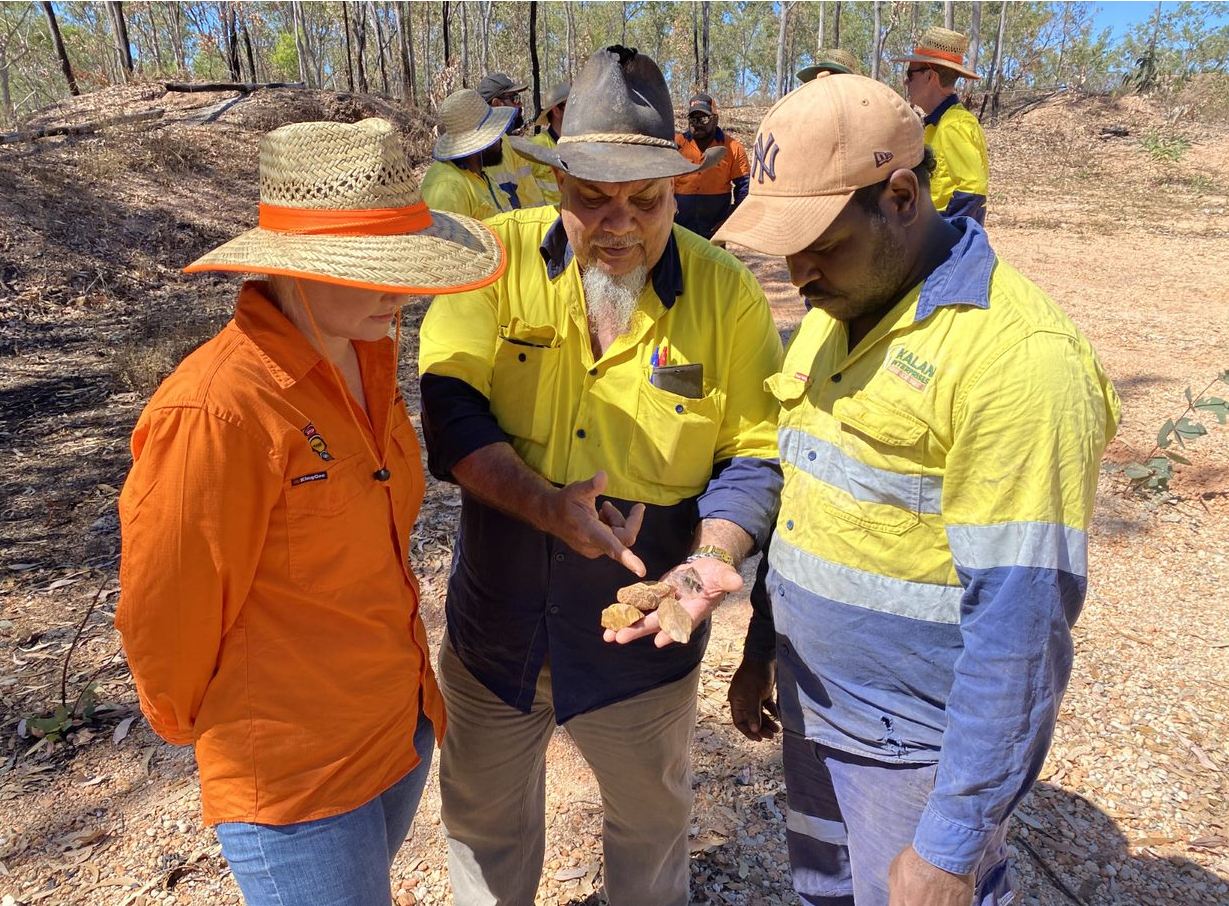Cultural Heritage recognises and highlights the work we undertake in managing Aboriginal and Torres Strait Islander people's heritage
Darryl Murgha—Archaeologist, on TMR’s Cultural Heritage work
Show/hide transcript
Video transcript
My name is Darryl Murgha. I'm an archaeologist. The reason why I'm here is because I do a lot of cultural heritage negotiation with traditional owners at each section of the road.
The induction in the morning, as you know, with road contractors, RoadTek we work with all those other contractors as part of that before they actually start work in the morning. They actually got a thing called Toolbox. A toolbar consists of safety talk before we go out on country.
After the toolbox or doing a toolbox, I present my cultural heritage induction and that's very important, specially when you working up on Aboriginal land.
Men's business, woman's business, is a must for teaching contractors because they just can't go into a land. Anybody traditional owners land and just go safe agreement to filter water bottle up or go fill up a water tanker truck but just don't go there without permission because that particular water hole could be sacred. There could be a woman's flat, you know. So as teaching, educating each and every one of us. Even a lot of indigenous people are on Cape York, the younger ones. They don't even know that.
So I teach them a bit about the archaeologist side. And I already got the cultural knowledge from their elders. But I passed that archaeological side.
We recognise the significance of different cultures and the importance of managing Aboriginal and Torres Strait Islander People's heritage, whether it be archaeological, intangible, historical, shared or natural heritage in Queensland. This includes respectfully acknowledging and protecting:
- places and built structures
- landscapes and ecological communities
- documentary records and works of art and non-material culture such as religious beliefs and folklore
- ideas
- memories and skills
- practices.
 Darryl Murgha (centre) conducting a Cultural Heritage induction on Cape York Region Package Stage 2, 2020
Darryl Murgha (centre) conducting a Cultural Heritage induction on Cape York Region Package Stage 2, 2020
Protecting Cultural Heritage is an important consideration for our projects, in both metropolitan and remote areas. All transport infrastructure projects are subject to a comprehensive Cultural Heritage risk assessment conducted by a trained TMR Cultural Heritage Officer. These risk assessments determine whether Traditional Owners are consulted on projects, and if so this consultation can include meetings, surveys, archaeological excavations, monitoring, salvaging, relocation of heritage to a point of safety and inductions. This consultation is usually conducted under a Cultural Heritage Management Agreement or Plan negotiated between TMR and the relevant Aboriginal and Torres Strait Islander party.
'We live together in understanding, sharing our cultures,
our customs and stories'
TMR is responsible for managing local, state and Commonwealth heritage on departmental land across Queensland. Our Cultural Heritage Officers consult with local communities and build positive relationships to deliver strong outcomes for the protection of cultural Heritage during transport infrastructure construction activities across the state.
The Aboriginal Cultural Heritage Act 2003 and the Torres Strait Islander Cultural Heritage Act 2003 provide a legal framework on how we identify, assess and manage Indigenous Cultural Heritage.
Under these Acts, Indigenous (both Aboriginal and Torres Strait Islander) Cultural Heritage is defined as:
- anything that is a significant Aboriginal or Torres Strait Islander area in Queensland
- a significant Aboriginal or Torres Strait Islander object
- anything that is significant evidence of Aboriginal or Torres Strait Islander occupation of an area of Queensland. It can be significant because of tradition or because of the history of the area.